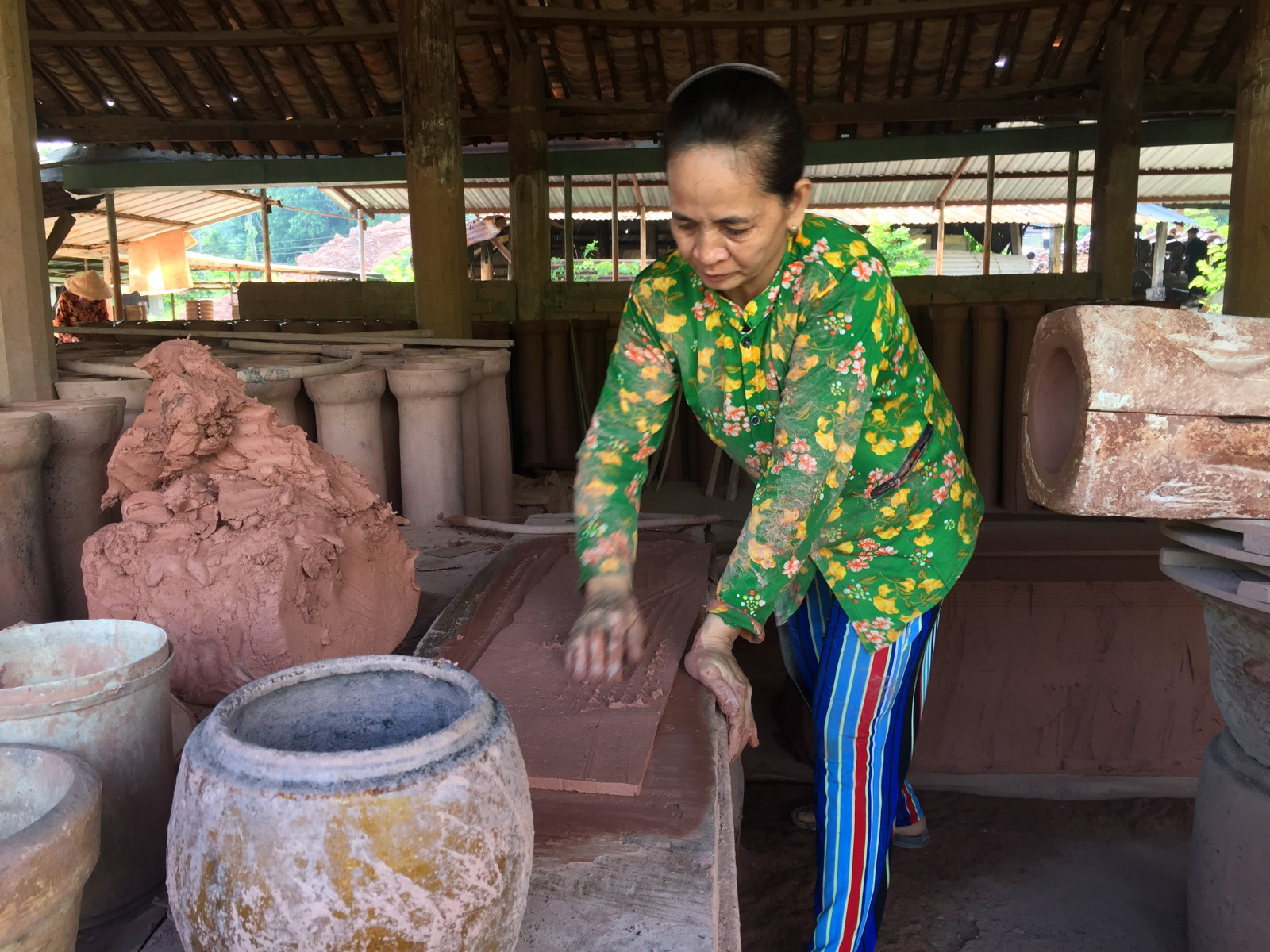A place at the heart of Thu Dau Mot to save traditional pottery craft
"Lò Lu" is a very close and familiar name to people in Tuong Binh Hiep Ward, Thu Dau Mot City. However, few people know when that name appeared; people only know that on this area, for a long time, many pottery kilns were formed specializing making of jars, pots, barrels...

From the street named Lò Lu…
Along Binh Duong Boulevard, from Thu Dau Mot City Center to Ben Cat Town, passing Suoi Giua toll station, on the left hand side is Ho Van Cong Street. Continue running along Ho Van Cong Street about 1.5km to Lo Lu street.
Since 2005, the Provincial People's Committee decided to name this road Lo Lu Street. According to some locals here, this road was named Lo Lu, perhaps because there were many kilns in the past. Nguyen Thai Hien, 41 years old, a resident here shared: “Since childhood, I have heard the elders call this area Lò Lu, but since when the name Lò Lu associated with this land, I do not know. In the past, there were numerous kilns operating in this area, but now they have removed them all, only a few kilns are still red".
Gradually, with the development of the new ceramic industry, traditional kilns here also gradually narrowed. With the investment in production technology, products of many ceramic establishments in the province are diversified, the designs are more beautiful and quality is also improved. Many traditional kiln owners cannot compete with modern establishments, hence they have to invest more in technology to develop in time or close their kilns and change to a new industry. Currently, on Lo Lu Street, there are only a few pottery kilns still operating, such as Lò Lu Dai Hung, Lò Lu Tam Vang... These kilns are still produced according to traditional methods, of which Dai Hung establishment was recognized as a provincial relic in 2006.
… to the relic Lò Lu Dai Hung
Dai Hung kiln is considered the oldest pottery kiln that has existed until this day in Thu Dau Mot. The protection, preservation and recognition of this relic aims to record an important vestige on the development path of traditional pottery craft of Thu land. If visitors want to learn about production stages of a traditional pottery product, they may visit this establishment located at Lo Lu intersection, the cut with Le Chi Dan street, to experience.
It is very easy to recognize this "lò lu", because from the beginning of the road there are many kinds of jars, pots, barrels etc. piled up on both sides of the road. Dai Hung "Lò Lu" was built by Vietnamese-Chinese people around the beginning of the 19th century, with a total area of more than 10,000m2. This is a place specializing in making pottery by traditional manual methods, with the main products of jars, pots, barrels... From its first day, this kiln has gone through many owners. The current owner (the sixth generation) of Dai Hung Lò Lu is Bui Van Giang. Giang said that the kiln has existed for about 180 years. Although pottery has developed, he has maintained production according to the traditional method because he wants to preserve this. In addition to jars, pots, barrels, Dai Hung Lò Lu also produces many more household items to orders to serve other daily needs.
After being recognized as a provincial relic, the kiln has been preserved to retain the inherent space of an ancient pottery kiln. Therefore, for locals and tourists wishing to visit and learn about traditional craft villages in Binh Duong, Lò Lu Dai Hung is one of the most suitable and favorite destinations. Visitors may see firsthand to understand more about production stages to create a traditional pottery product. If visitors want to experience, they will be guided by craftsmen here in different stages. This is also quite interesting for visitors when they have an opportunity to learn about traditional craft villages.
From the starting material, soil, a craftsman use a rolling mill to roll (only this stage is different from the previous manual method), then the soil will be stuffed, forming different products at the request of the kiln owner, and then dried in the sun. Products after drying are enameled, continue to be dried and then put into the kiln. According to Giang, production stages in Dai Hung kiln are still mainly done by hand, so it takes more time compared to ceramic kilns using modern machines. Therefore, on average, it takes about 1 month for potters to make enough products to light the kiln once. Each kiln burning lasts three consecutive days to produce finished products for consumption.
Previously, when the Covid-19 had not yet broken out, Lò Lu Dai Hung was a destination in the tourist route to craft villages of Binh Duong. Not only guests in the province, every month, Lò Lu Dai Hung also welcomes dozens of delegations from other provinces and cities. Many film crews also come here to make documentaries about traditional craft or set the scene of an old kiln for their films. There are also many young people, who love ancient scenes and nostalgia, also come here to visit and save beautiful memories by this ancient pottery kiln. However, according to Giang, from the beginning of 2020, due to influences of the Covid-19, the number of tourists coming here has decreased a lot.
Reported by Hong Thuan - Translated by Ngoc Huynh

